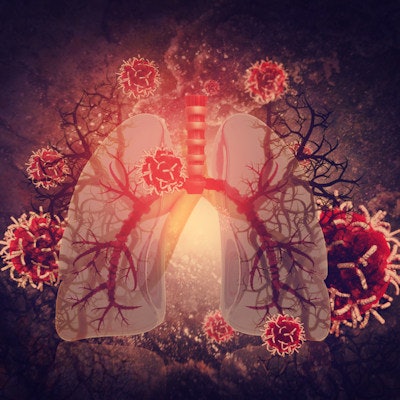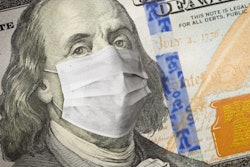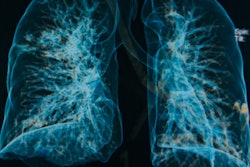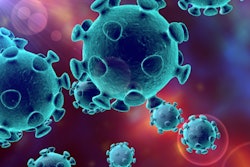
A chest CT classification system developed by the RSNA for interpreting COVID-19 pneumonia cases shows substantial agreement among readers, according to a study published June 11 in Radiology: Cardiothoracic Imaging.
The study findings suggest that the RSNA system could help clinicians better navigate assessment and diagnosis of patients with suspected COVID-19, wrote a team led by Dr. Tom de Jaegere of Zuyderland Medical Center in Heerlen, the Netherlands.
"Because disagreement between CT interpreters can result in dissimilar diagnoses and subsequent patient management recommendations, high interobserver agreement is crucial before chest CT can be routinely used in practice," the team wrote.
Testing with real-time reverse transcription polymerase chain reaction (RT-PCR) is the current gold standard for diagnosing SARS-CoV-2 infection, but RT-PCR does have limitations, including the time it takes to receive results and its sensitivity to early disease. Chest CT can be a useful alternative or adjunct tool to RT-PCR testing because it can be performed quickly and has a high sensitivity for diagnosis of COVID-19, the group noted.
Zuyderland Medical Center began using chest CT for patients with suspected COVID-19 in March, but it discovered that interpretation of the exams wasn't as straightforward as expected, due to reader inexperience, a lack of clear diagnostic criteria for COVID-19 on CT, and the fact that COVID-19 chest CT findings can overlap with other diseases.
In March, the RSNA released a consensus statement regarding COVID-19 chest CT findings, which includes four categories for reporting COVID-19 results on chest CT (typical, indeterminate, atypical, and negative). But the system has not yet been evaluated, according to de Jaegere and colleagues. So they conducted a study to assess the guideline's soundness.
For the study, the researchers had two chest radiologists and a fifth-year radiology resident evaluate chest CT scans from 96 patients with suspected COVID-19. They used the Kappa measure to evaluate intraobserver agreement. Of the 96 patients, 45 were confirmed to have COVID-19 with RT-PCR tests.
The group found that the Kappa coefficient for interobserver agreement between the chest radiologists was substantial; between the chest radiologists and the resident, it was moderate. Researchers also found that interobserver agreement using the RSNA system was comparable to the recently developed COVID-19 Reporting and Data System (CO-RADS).
| Interobserver agreement with RSNA system for chest CT in COVID-19 patients | ||
| Reader pair | RSNA classification system | COVID-19 Reporting and Data System (CO-RADS) |
| Chest radiologist 1 and 2 | 0.663 | 0.773 |
| Chest radiologist 1 and resident | 0.570 | 0.658 |
| Chest radiologist 2 and resident | 0.564 | 0.648 |
Although there was substantial agreement among readers when it came to chest CT results, radiologists should keep in mind that some percentage of COVID-19 cases confirmed on RT-PCR testing may not turn up as positive on CT, especially in the "atypical" and "negative" categories, the group cautioned.
"The RSNA chest CT classification system for reporting COVID-19 pneumonia has moderate to substantial interobserver agreement," the group concluded. "However, radiologists and clinicians should take into account that the proportion of RT-PCR confirmed COVID-19 cases in the [chest CT] categories 'atypical appearance' and 'negative for pneumonia' [may not match]."





















